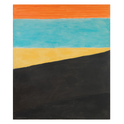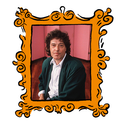I'm on a boat in the middle of Alaska, holding a hydrophone under the icy water, trying to hear humpback whales talking to each other so that a £500,000 camera can film them. It's not what I would describe as a normal day.
What I'm doing, as per the instructions of onboard marine biology professor Jan Straley, is rotating the hydrophone while the boat is stationary. We're trying to pick up and then locate excited whale chatter because it signals something special: it means that the animals are likely to surge up through the water, emitting bubbles that drive thousands of herring toward the surface, where the whales will open their enormous mouths and swallow them.
The behaviour is called bubble-netting, and the trick is to coordinate the operation such that the film crew know when and where to point their cameras to catch the whales as they emerge.
This is how it feels to peek behind the curtain of David Attenborough’s Our Planet. The Netflix documentary series, released earlier this spring, has been a runaway success with 25 million views in its first month on the streaming service.
When I catch up with the crew it’s late March 2018, and the humpback whales are arriving in Alaska from Hawaii where they have been breeding. They're ready for what will be their first meal in months, and they're here for one reason: herring are coming. Throughout the winter the herring have stayed in the open ocean but now they're heading for the coast to spawn.
Oliver Scholey, one of the researchers on the team, explains in their cabin that the fish choose to spawn in the spring because this is when the sun hits the water, causing the plants to photosynthesise. This in turn makes the phytoplankton in the water bloom, providing abundant food for their young.
We're in Sitka, a town of 8,863 people. Sitting on Alaska's eastern coastline, Sitka looks as though whoever made the world had a surplus of mountains and decided to absent-mindedly dot the shore with them. Ernie Eggleston, an ex-fisherman who likes to wear velour, is the captain of our boat. Eggleston moved to Sitka 20 years ago and plays folk music and blues in his spare time.
“Fishing is the main thing in Sitka,” he says. “Tourism is starting to creep up on it. They like to think they’re the most important but they’re not.” He shows me photos of the whales feeding extremely close to the boat the day before I arrived. They had also tried to bubble-net directly under the boat but had to abort when they realised it was in the way.
When I learn how the whales plan to eat the herring, I'm worried. Over the best fish and chips I have ever eaten, I ask assistant producer Gisle Sverdrup: what if the whales swallow the boat and us with it? First of all, he explains, our boat is far too big. Second, because of the way the filtering system in a whale's mouth works, even if they did swallow you, they would spit you out. This is reassuring. He adds that by that point, the whale would have broken all of the bones in your body. This is less reassuring.
The humpback whales aren't the only predators to realise what the herring are up to. From our boat, the Gust, we watch sea lions, seagulls and eagles arrive to pick off the fish. At one point we look over at a rock and see the unnerving sight of five dozen bald eagles, sitting perfectly still, watching us. It's as if they are considering whether there are enough of them to take us on as well.
Approximately 30 humpback whales are swimming around the area, says Jan Straley, who has lived in Sitka for around 40 years and whose expertise helps the crew track the whales. She explains that she's watching to see which of the whales are currently in the area; which are feeding on the herring; and whether there are any associations between the animals.
“Some of them have been coming here for years; decades,” she says. “Once the herring spawn, most of these whales will scatter; go off shore, go further north or south.”
At one point, Straley's colleague Lauren Wild takes aim at a whale surfacing around 30 feet from the boat and fires a type of scientific crossbow at it. This gives her a blubber sample that will provide information about diet, pregnancy, and genetics.
In the team's cabin, Scholey shows me some of the footage they have already captured in other parts of the world. It is a sight to behold. Aside from the humpback whales from the previous day, there are shots of a tiger walking towards the camera; under- and above-water footage of sea lions; aerial shots of a blue whale and her calf. He and Sverdrup explain that in Alaska, they aim to tell the stories of the different animals—the prey and the predators—involved in this natural phenomenon.
As well as using the £500,000 Cineflex camera that they need to strap to the boat every day, the team employ the skills of cameraman Doug Anderson, who specialises in underwater filming. They also use a drone, which buzzes skyward from the boat to film the humpback whales' feeding from above. From this height, their mouths agape, the whales look like mussels opening and closing.
Filming the bubble-netting is an almost farcically multi-layered task. The team directs the boat to somewhere they believe whales to be; it stops; I plop the hydrophone into the water and start rotating it; the noises recorded by the hydrophone are transmitted onto the deck by a radio.
Once an approximate source has been identified, person A swings the camera in that direction while person B—the only person who can see exactly what the camera can see—then shouts directions to person A, according to whether or not the camera is pointing in exactly the right place or not. There are plenty of misfires, both close and not so close.
Up close, the laborious days, that see us drifting around seeing nothing whatsoever or suddenly trying to film five seconds of frenetic activity, don't seem like they'll necessarily translate into breathtaking television. It feels as though Mother Nature is occasionally on our side but for the most part it is complex, awkward, technical work. Which, in a way, should come as no surprise.
But, when I eventually watch the perfectly assembled footage on Netflix, my heart stops for a second. Understanding the lengths to which the teams go in order to secure their footage, not to mention knowing that I was somewhere behind the camera all the while, makes the experience feel all the more profound. It can't help but make me feel more connected to the remarkable stories being told onscreen.
“I helped film that,” I say to my wife. “That was me. I was there.”
Whale tale: what it's like to go behind the scenes on David Attenborough's Our Planet
The Netflix series was a runaway hit when it was released this spring—and understanding the lengths to which the teams go in order to secure their footage makes watching it even more profound
June 24, 2019

Our Planet was a runaway hit. But what is it like to work on the series? Photo: PA/Prospect composite











